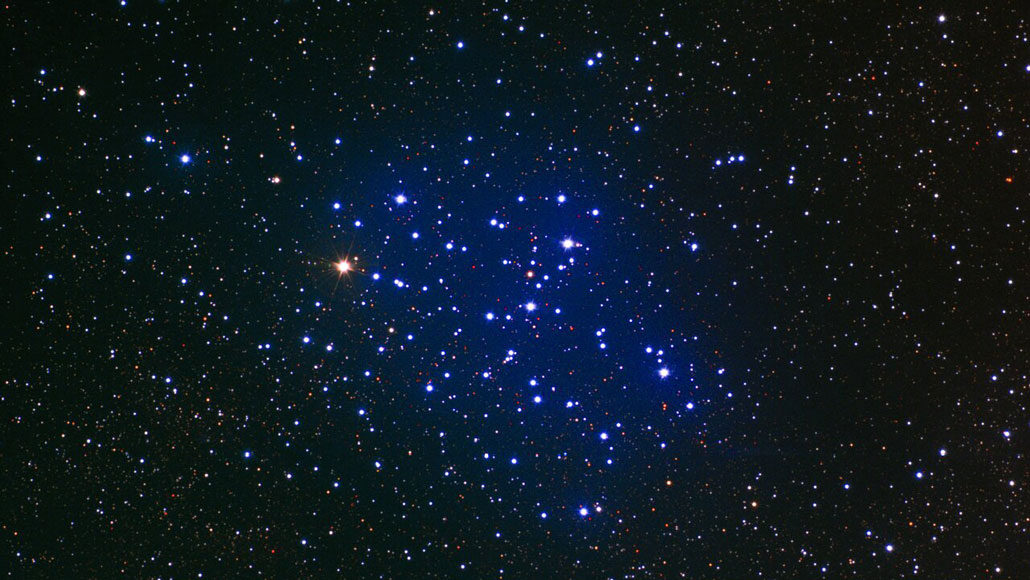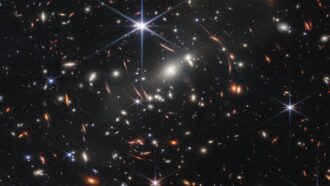Explainer: Calculating a star’s age
This is one thing best left to the professionals, because it’s not as easy as you think

Clusters of stars like this one, called NGC6405 or the Butterfly Cluster, formed all of their stars around the same time. That fact has helped astronomers figure out how old star clusters are. But finding the age of solo stars is much harder.
N.A. Sharp, Mark Hanna, REU program/NOIRLab/NSF, AURA
By Lisa Grossman and Helen Thompson
Scientists know quite a lot about stars. After centuries of pointing telescopes at the night sky, astronomers and amateurs alike can figure out key traits of any star, such as its mass or its composition.
To calculate a star’s mass, just look at the time it takes to orbit a companion star (if it has one). Then do a bit of algebra. To determine what it’s made of, look to the spectrum of light the star emits. But the one aspect scientists haven’t quite cracked yet is time.
“The sun is the only star we know the age of,” says astronomer David Soderblom. He works at the Space Telescope Science Institute in Baltimore, Md. We use what we know about it and how it compares to others, he says, to figure out the age of other stars.
Even well-studied stars surprise scientists every now and then. In 2019, the red supergiant Betelgeuse dimmed. At the time, astronomers weren’t sure if this star was just going through a phase. The alternative was more exciting: It might be poised to explode as a supernova. (Turns out it was just a phase.) The sun also shook things up when scientists noticed that it wasn’t behaving like other middle-aged stars. It’s not as magnetically active as other stars of its age and mass. That suggests astronomers still might not fully understand the timeline of middle age.
Using physics and indirect measurements, scientists can make a ballpark estimate of a star’s age. Some methods, it turns out, work better for different types of stars.
Why do we even care? Galaxies are huge collections of stars of different ages. Star ages might help us figure out how such galaxies grow and evolve or how planets within them form. Knowing star ages might even assist in the search for life in other solar systems.

Educators and Parents, Sign Up for The Cheat Sheet
Weekly updates to help you use Science News Explores in the learning environment
Thank you for signing up!
There was a problem signing you up.
H-R diagrams
Scientists have a pretty good idea of how stars are born, how they live and how they die. For instance, young stars start burning through their hydrogen fuel. When that fuel is largely gone, they puff up. Eventually they’ll spray their gases into space — sometimes with a bang, other times with a whimper.
But when exactly each stage of a star’s life cycle occurs is where things get complicated. Depending on their mass, certain stars hit their age milestones after a different number of years. More massive stars die young. Less massive ones can burn steadily for billions of years.
At the turn of the 20th century, two astronomers — Ejnar Hertzsprung and Henry Norris Russell — independently came up with an idea of how to chart stars to categorize them. They plotted each star’s temperature against its brightness. The patterns they made when charted together became known as Hertzsprung-Russell diagrams. And these patterns corresponded to where different stars were in their life cycle. Today, scientists use these patterns to determine the age of star clusters, whose stars are thought to have all formed at the same time.
One problem: Unless you do a lot of math and modeling, this method can be used only for stars in clusters. Or it can be used to compare a single star’s color and brightness with theoretical H-R diagrams. “It’s not very precise,” says astronomer Travis Metcalfe of the Space Science Institute in Boulder, Colo.
Unfortunately he adds, “It’s the best thing we’ve got.”







